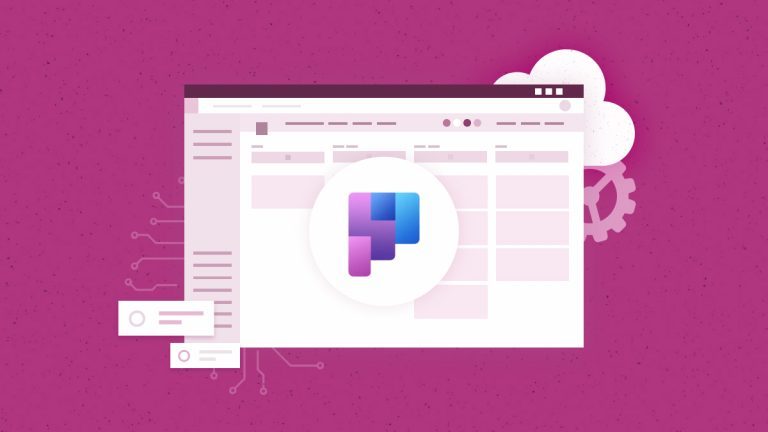
Elena Humeniuk
PPM Consultant
Seven business process improvement methodologies exist to help your team decrease inefficiency issues. Organizations today rely on various process improvement methodologies to enhance their operations, eliminate inefficiencies, and increase profitability. The systems enable productive teams to examine current processes with defined structures to find development opportunities and deploy successful answers. Everyone from Six Sigma practitioners to Total Quality Management users, Lean manufacturers, and Business Process Management professionals utilizes distinct operational strategies to reach excellence. Companies that adopt process improvement gain stronger internal operations and develop the capacity to adjust their market strategies in response to changing customer necessities.
What is process improvement?
Business process improvement is optimizing current business operations through analytical examination to achieve maximum performance while minimizing errors. The evaluation methods of business process improvements enable teams to transform current processes to reach higher productivity levels by reorganizing workflows and adapting to new business requirements for enhanced profitability.
7 types of process improvement methodologies
Seven business process improvement methodologies exist to help your team decrease inefficiency issues. The business process improvement methodology you select relies mainly on the reasons behind your process enhancement goal and the optimization targets.
Six Sigma methodology
By implementing the Six Sigma process, organizations aim to reduce the numerical differences in their final products. American engineer Bill Smith developed Six Sigma as a process in 1986 for Motorola employees to provide business leaders with data-based performance evaluations of their methods. When a process reaches sub-3.4 defective items during one million cycles, it qualifies as optimal.
Six Sigma provides the most effective results in industrial production since it reduces defects and maintains consistency. The primary purpose is to achieve consistent outcomes that ultimately satisfy customers.
As part of the Six Sigma methodology, two primary execution methods exist: DMAIC for current processes and DMADV for new process development. The upcoming section about existing process improvement focuses exclusively on the DMAIC process.
What is the DMAIC process?
DMAIC functions as the Six Sigma process designed to enhance the operational performance of current procedures. DMAIC stands for:
- Define the opportunity for improvement.
- Process performance needs to be measured from current operations.
- The process needs analysis to identify defects and underlying causes.
- Processes should improve through the direct remedy of their fundamental causes.
- Implement control measures on enhanced procedures while you monitor future process conduct to handle deviations.
The main process transformation through DMAIC occurs in the analysis phase. The analysis phase of DMAIC requires teams to use fishbone diagrams (Ishikawa diagrams) to depict product defect causes. The head of a fishbone diagram introduces the initial problem, and different categories of issues that contribute to this problem run along its spine. The graphical representation provides an effective method to understand the challenges stemming from one root cause.
Total Quality Management (TQM)
TQM operates as a customer-oriented process that drives sustained enhancement over an extended period. Suppliers use this approach during supply chain management, thus improving business processes and customer satisfaction.
TQM relies heavily on data-driven decisions and performance metrics. Success metrics enable you to determine what improvements will best enhance a process during problem-solving operations.
Here are some key process improvement steps of TQM:
- The primary purpose of TQM is to deliver advantages to end customers. When your team works on quality improvement, ask what kind of modification experience end consumers will receive from the changes made to your product.
- The methodology of TQM requires complete team membership since it involves the entire production workforce, plus everyone else, until completion. The process discovery leads to seeking ways to optimize business processes, including sales and marketing, to benefit consumers.
- Continuous improvement within business operations represents generating recurring transformations that maximize operational processes through minor adjustments. The varying factors across business operations require your team to use continuous improvement as a tool for responding to changes in external business conditions.
- The core purpose behind TQM implementation is to enhance business processes. Six Sigma, alongside TQM, functions to decrease inefficiencies in the workplace, but Six Sigma directs efforts at reducing process defects.
Lean manufacturing
Lean manufacturing is the most recognized label among the multiple names describing this method of process advancement. Production under lean manufacturing received two alternative names: lean production and just-in-time production. In their book “The Machine That Changed the World,” James P. Womack, Daniel Jones, and Daniel Roos established five main principles of lean through their observations at Toyota manufacturing facilities.
The five principles of lean manufacturing are as follows:
- Identify value
- Value stream mapping
- Create flow
- Establish pull
- Continuous improvement
Continuous improvement (Kaizen)
Organizations can follow continuous improvement methods through the Japanese philosophical system of Kaizen. According to the Japanese belief in Kaizen’s existence, it needs to improve perpetually because improvement delivers both satisfaction and fulfillment.
Business success depends on continuous improvement methodologies since ongoing development automatically leads to increased achievements. The purpose of continuous improvement consists of maximizing value-creating processes while eliminating all wasteful practices.
According to Kaizen principles, we need to eliminate three categories of wasteful practices:
- The practice of Muda involves resource consumption without providing valuable results.
- The production method of Mura creates unevenness, which results in surplus product waste.
- When human resources or machinery reach their maximum capacity and need replacement or additional staff, they are categorized under Muri (overburden).
Plan Do Check Act (PDCA)
Problem-solving occurs through the interactive PDCA cycle design. PDCA functions both for improvement activities and change implementation processes. Walter Shewhart developed PDCA by applying the scientific approach to economic quality control systems. W. Edwards Deming expanded Walter Shewhart’s original idea by proposing the scientific approach to optimize process improvement and quality control elements.
The PDCA cycle consists of four essential steps describing its operation.
- The first step requires individuals to pick the issue they want resolved and develop the solution guidelines.
- A small-scale testing phase should follow the preparation of your plan.
- During the Check phase, you must examine the outcome of the changes that occurred during Do.
- Once you examine the test results, you will decide if the change should be deployed on an extended scale.
PDCA is very effective among all the process improvement methods. The PDCA cycle allows teams to execute its steps multiple times to achieve their target outcome.
5 Whys analysis
Organizations utilize the 5 Whys analysis as their process improvement method that reveals genuine causes behind problems. The theoretical concept explains that the process requires stakeholders who have experienced the failure to respond to a single question about the failure’s causes. You should ask these questions to expose the fundamental reason behind the issue. The 5 Whys analysis helps process evaluation by revealing problems, but fails to detect human mistakes.
Here’s an example:
Customers sent more complaints about products receiving damage to the company representatives.
- “Why did this happen?” The packaging failed to provide enough protection for the items.
- “Why was the packaging not sufficient to protect the products?” Customers complained because the packaging method failed to provide enough protection for the delivered items. The packaging testing team stopped their analysis before continuing with the stress level assessment.
- “Why did the team not test the packaging further?” The team responsible for testing packaging failed to extend their examination beyond the current limits. The standard operating procedures already showed that the present testing measures delivered appropriate results.
- What was the basis behind the existing standard process to determine whether the testing was sufficient? This process originated from an earlier existing product, but does not apply to the present damaged model.
- “Why wasn’t there a new process for the new product?” A fresh process should have been implemented to address the new product requirements. A new product launch project template lacks a requirement for assessing the new packaging under stress conditions.
The team used Why questions to determine the process error, which required adding stress testing new packaging to their product launch template as a solution. Identifying issues with stakeholders remains essential in work process improvements because co-creating subsequent steps leads to production enhancement.
Business Process Management (BPM)
The analysis and enhancement of business processes through business process management constitutes BPM. Evolution occurs naturally to businesses, exactly like all living organisms. The initial processes your team set up when small grew with you, yet they likely present difficulties when your team needs maximum efficiency.
- BPM enables teams to find process blocks besides automatic workflow possibilities and effective efficiency solutions. Business process management contains five essential stages for completion.
- Examine your current procedures, and then outline each stage, from the first process to the final step-by-step. Process mapping stands as the common terminology used for this step.
- Develop the future configuration of operations as a draft. The first step should reveal process inefficiencies that allow you to plan your solutions during this drafting phase.
- Use your developed model to initiate active deployment. Fixing key success metrics becomes essential in stage three to determine if implemented changes work well.
- The success of your project will be determined through monitoring activities. The success metrics defined in step three show improvement results.
- A continuous optimization process should be maintained since your procedure will develop.
Conclusion
Under existing market competitiveness, organizations must adopt essential business improvement techniques for continuity and achievement. Different business process enhancement approaches, including Six Sigma and TQM, lean manufacturing, and BPM, offer organizations efficient operational improvement tools. The success of process improvement management requires selecting the right approach to meet business needs. This will enable organizations to compare process improvement methodologies. This comparison should be done before taking any process improvement initiatives. Organizations achieve systematic process enhancement when they thoughtfully deploy their continuous improvement techniques. Adopting DMAIC or PDCA systematic methodologies ensures that project changes translate to measurable, specified results. Applying 5 Whys analysis and Kaizen in process improvement represents advanced practices that establish problem-solving methods and sustained advancement cultures. Organizations implementing such methods throughout their culture achieve optimal adaptation to process improvement ideas while boosting customer fulfillment to become successful over the long term.
Download whitepaper
to learn more about project data protection

























